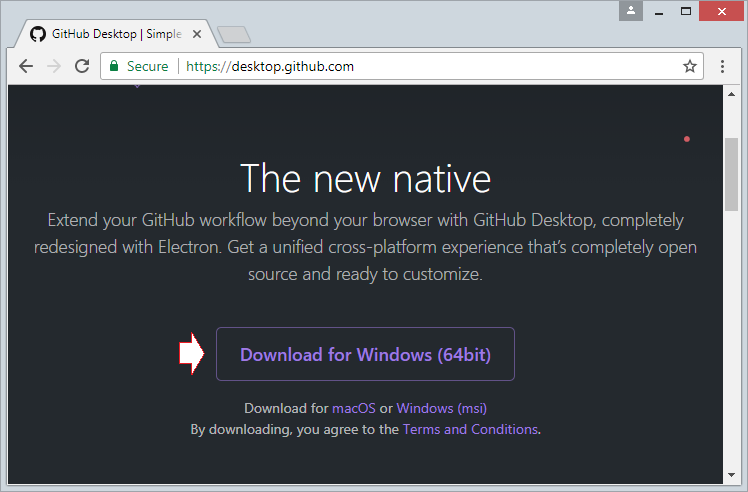
GITHUB DESKTOP WINDOWS
Although GitHub Desktop defaults to using the Windows documents folder for its local repositories, you can choose an alternate root path for your files, one that fits with your personal workflow.

Once installed and configured, GitHub Desktop gives you the option of working with local repositories or cloning external Git repositories. There’s no support yet for the new Windows Terminal or for Windows Subsystem for Linux. You can choose an external editor and a shell, with options for the Windows command line, PowerShell, or Git’s bash prompt. If you’re using an existing Git client such as Git for Windows you can use it with GitHub Desktop, bringing the two tools together. You need a GitHub account to use any of GitHub’s tools, either on GitHub itself or in a GitHub Enterprise instance. That way you can use a tool such as Draft to create the scaffolding for an application before setting up a repository. It’s a relatively simple tool, able to take a GitHub URL and clone the repository locally or create a new repository based on a directory tree in your local filesystem. Once you’re satisfied with them, it’s easy to push them back up to GitHub in a single sync action. Repositories are cloned locally, and changes are committed to your current branch. Available for both Windows and Mac, it’s a way of visualizing and managing repositories and branches, linking your local filesystem with your GitHub account. GitHub Desktop is GitHub’s preferred way to integrate your desktop toolchain with the service. By surfacing these features in its desktop and mobile applications, GitHub makes it easier to work socially without getting in the way of actually doing that work and writing code. Using its tools, you don’t have to spend time in a Web application, switching away from your workflow and toolchain, losing context every time you want to comment on a change or evaluate a pull request.

GITHUB DESKTOP CODE
So why use GitHub’s own tools? Its social coding model has added more to the Git workflow than only making commits and managing merges, with tools for analyzing code and building conversations around your team’s actions. With deep hooks into Windows Explorer and its own bash-like command line, it’s an easy route to using Git and GitHub, treating local and remote repositories in exactly the same way. One option is the popular Git for Windows implementation that Microsoft integrates into its Visual Studio Code programmer’s editor. You’re not limited to using GitHub’s own tools, as any Git client will work with the service. With the shift to distributed and remote teams, it’s increasingly important to find new ways of adding collaboration. Its repositories build on the underlying open source Git source control protocol, using it as the foundation for a social coding model that aims to change the way developers work, in public and in private. It’s an interesting development model. GitHub is for a lot more than sharing your code with your team or the world. GitHub’s own developer-focused tools have gotten much more attention in the past year, with regular updates to GitHub Desktop and the release of its first native mobile applications for iOS and Android. Instead, under new leadership and with more clarity about its future, GitHub has accelerated its product development and rollout, adding features to its Web services and to its platform. However, that hasn’t left GitHub stagnant and drifting. It’s an approach that makes a lot of sense Microsoft’s past relationship with the open source community hasn’t been the best, and there’s still not much trust there, despite significant moves towards open design and open development models from Redmond.

Microsoft has taken a very hands-off approach with GitHub since its acquisition last year.


 0 kommentar(er)
0 kommentar(er)
